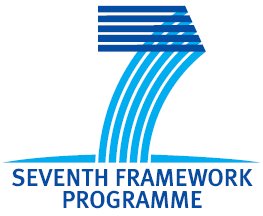S(o)OS Deliverables
S(o)OS D6.2 - Benchmarking & Evaluation #1
S(o)OS investigates alternative OS architectures to overcome the problems inherent to the growing scale and heterogeneity of future computing systems. To this end, the S(o)OS project identified the specific requirements put forward by future computing architectures and their usage (D5.2). On basis of this analysis, a set of essential functionalities could be identified that future operating systems need to fulfil (D6.1). During the first project cycle, S(o)OS established a set of OS components related to these specific requirements (D2.2, D3.2, D4.2) and an according architecture outline on how these components can fit and interact together to support future use cases and provide the ability to deal with the scale and heterogeneity of future system architectures (D5.3).
In order to identify whether and in how far these components actually contribute to fulfilling these objectives, they need to be assessed against the requirements identified in D5.2 and D6.1. This document summarizes the results from this evaluation effort and analyses whether the chosen approaches are sensible in light of these expectations, respectively where they clash and why. This document does not conclude the evaluation or implementation effort, but provides feedback to future iterations of development and research in these domains. More specifically, the results will be used to shape the work in the second project cycle, namely to select the promising components and develop them further, as well as to identify alternatives. The final evaluation will thereby focus more than this one on the whole integration of the selected components.
As can be seen in the text below, the current S(o)OS components show a high degree of scalability for static use cases, i.e. where the infrastructure is not expected to change at run-time. Such dynamicity would imply additional aspects of reliability and state maintenance that have not been considered in the first project iteration and will be a more relevant issue in the second cycle. The basic architectural approach, namely to handle the OS components in a cloud-like work-balanced fashion, allows for higher dynamicity in handling the infrastructure, yet at the same time requires an efficient management system for maintaining the instances and their replication / relocation – these aspects however are of primary relevance only in dynamic cases, i.e. where the distribution of components may have to change in accordance with the applications’ runtime requirements and changes in the infrastructure setup. With the first cycle we assume that the relationship between code segments, OS components and infrastructure are fixed prior to execution as part of the segmentation process.
Due to the principle flexibility of the current architecture, we can denote a wide usage scope of the individual components, without yet being able to provide concrete comparison values: each component shows clear behavioural strengths and weakness which restrict (or support) the application scope. However, since some components serve explicitly the support of specific use cases (such as supporting different types of scalability), they can principally be unplugged or replaced thanks to the component-based approach of S(o)OS in other cases. In other words, the components themselves can be adjusted comparatively easy to the use cases. However, in order to achieve the full potential, the interoperation between these components needs to be well adjusted and elaborated in more detail in the second phase.
Download
S(o)OS Deliverable D6.2 - Benchmarking & Evaluation #1





